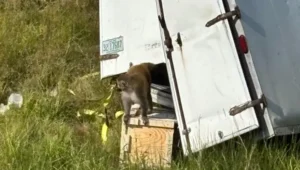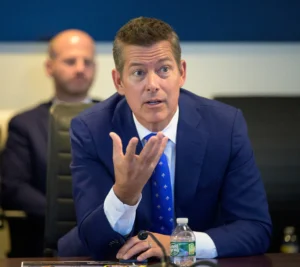The goal is to decarbonize supply chains and promote the adoption of emission-free heavy-duty trucks
On March 12th, the Biden Administration unveiled a plan to deploy electric vehicle charging infrastructure and hydrogen fueling stations along freight transportation corridors in the United States. The goal is to decarbonize supply chains and promote the adoption of emission-free heavy-duty trucks.
This plan aims to concentrate both public and private investments in key infrastructure to reduce diesel pollution from medium and heavy-duty trucks. It seeks to accelerate the adoption of zero-emission vehicles and ensure an efficient and reliable charging network, which could also lower fuel costs for businesses and improve air quality on busy highways.

Integral network of recharging and refueling infrastructure
The Environmental Protection Agency and the Departments of Energy and Transportation have set the primary objective of developing a comprehensive and accessible network of hydrogen refueling and charging stations by the year 2040. This will provide the necessary infrastructure to support the operation of zero-emission trucks.
Additionally, the plan aims to reduce greenhouse gas emissions. The transportation sector accounts for approximately 29% of greenhouse gas emissions in the United States, with over a fifth coming from medium and heavy-duty trucks.
In the United States, there are currently only 92 electric charging stations for heavy-duty trucks. This measure responds to growing demands from truck manufacturers for public incentives to develop charging stations, improve the electrical grid, and support the electrification of heavy-duty vehicles.
Between 2024 and 2027, the focus will be on improving 12,000 miles of roads, including Interstate 80 and other highways in California, Texas, and Florida, as well as routes near key ports such as Los Angeles, San Diego, Long Beach, Houston, New York, and Miami. This action is part of government efforts to reduce pollution in ports and highways, while the EPA establishes new emission limits and the Department of Transportation allocates $450 million in grants to enhance port safety and efficiency.

The 2025 Capitol Christmas Tree tour kicks off by the hand of Knight-Swift
The nearly 3,000-mile journey of the U.S. Capitol Christmas Tree began with a special celebration at the Nevada Day Parade in Carson City. The month

A new study links traffic accidents to violations of the ELP regulation
A new study analyzed the relationship between traffic accidents and drivers who violate the English Language Proficiency (ELP) regulation. A new study analyzed the relationship

Clean Truck Deal: Judge Halts California Emissions Agreement with Truck Manufacturers
Clean truck deal and California emissions return to the center of the national debate after a federal court blocks enforcement of the Clean Truck Partnership, pausing requirements tied to zero-emission truck adoption while litigation continues.

Truck Transport of Live Animals for Research: Lessons from the Mississippi Monkey Incident
The transport of live animals for research is under renewed scrutiny after a truck carrying rhesus monkeys overturned in Mississippi, allowing several to escape. This article explains what went wrong, how these transports are supposed to operate, and what lessons the trucking industry can take away.

Halloween activities for truck drivers: take the fun on the road
To celebrate this holiday safely while keeping the fun alive, we’ve put together a list of activities truck drivers can do to embrace the spirit

Secretary Duffy unveils new measures to strengthen trucking safety and compliance
In a press conference, Duffy pledged federal effort to eliminate fraud and improve trucking safety standards. On the morning of October 31, U.S. Secretary of
